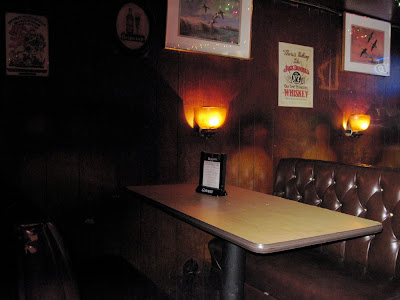When I arrived at Ladurée it was packed with two dozen people, which is why the people congratulated me for arriving at a lull.
I understood. It was a rainy day and if I had arrived when the line was longer I’d have had to open my mini umbrella and consequently figure out how to close it.
As it was, I could march right in and watch people wait for half an hour to buy imported Parisian macarons, whether they knew what they were or not.
Many of them, of course, knew what they were. This is a neighborhood with people who go to France the way I go to the Catskills. They were here because they already had a relationship with these cookies and were excited to keep it going without paying a surcharge for luggage.
Others were here simply to get their hands on the latest thing, for which time was running out because Ladurée has been here a month. The cookies are something new to displace our formerly new Beverly Hills cupcakes and our recently new East Village alcoholic cinnamon buns.
Macarons sounds like macaroons, so there are indeed visitors who expect to find something like the coconut lumps that come in cardboard cans labeled Manischewitz. These aren’t those. They are soft sandwich cookies with a creamy filling. In America they are known as Oreo Cakesters.
I take that back. A store representative gave me a chocolate macaron, and I admit that it made an Oreo Cakester seem like an Oreo Cakester. The cookies were like flaky madeleines and the filling was like chocolate ice cream. Ladurée is a place for the privileged, but it bought me for $2.70.
Anyway, most places on Madison Avenue are for the privileged, and at least this new fancy boutique has some simulated old-world charm. Its décor and its furnishings mostly evoke various recent centuries and combine to make you feel like you’re in a quaint French home with a cash register.
Within the home you’ll find the colorful little cookies in fourteen flavors including fleur d’orange, cassis violette, and pétale de rose. They are about the size of a Cakester but are indeed $2.70 apiece. Or, in “prestige boxes,” twenty-four for $67. Or, in “crystal boxes,” twenty for $58.
If you want to truly live the Ladurée life, you can accessorize your cookie collection with, say, a jar of confiture de fraise (strawberry jam) for $12, or a brioche-scented candle (in glass) for $62. But no pressure. The sales clerks do not disturb you. They wait quietly in their gray vests and ties and call out “Who’s the next guest?
This unlikely empire reportedly began in France in 1862 and promises to keep expanding under its current vigorous leadership.
Ladurée already plans a tea room where it will bake its cookies here in New York.
I intend to visit it when it opens.
I will bring a golf umbrella.
Line up at Ladurée, 864 Madison Avenue, between 70th and 71st streets, New York City.





















